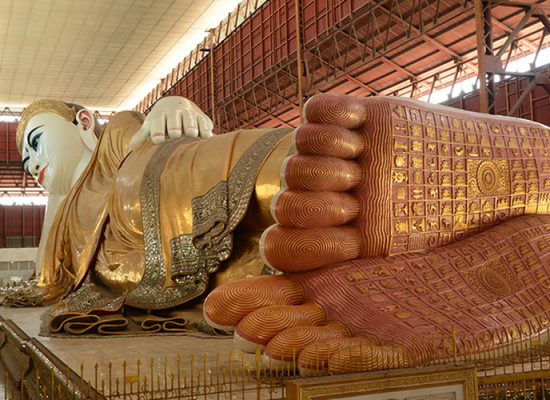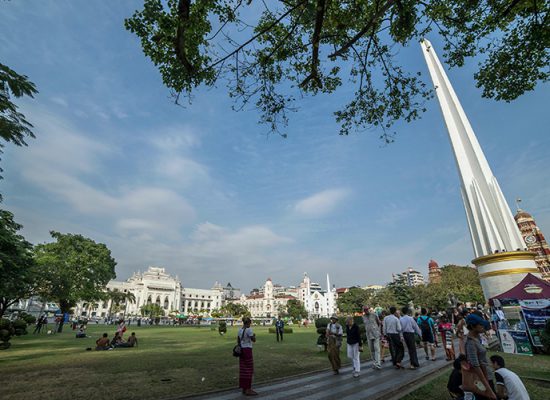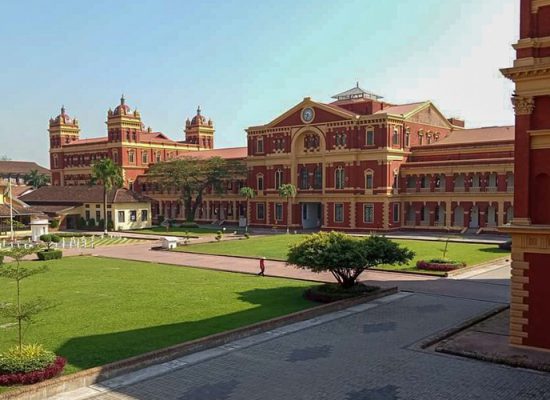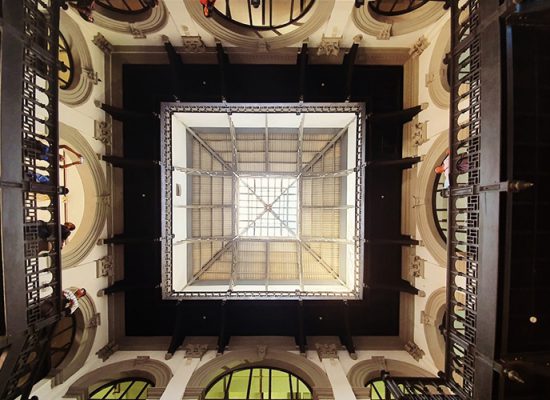
Shwedagon Pagoda
A visit to Yangon would not be complete without admiring the ‘Crown of Burma’ – the magnificent Schwedagon Pagoda – which is home to an amazing complex of shrines and pavilions. As one of the wonders of the world, it was built over 2600 years ago. It is a sacred site where the past four Buddha’s relics are enshrined. Standing close to 110 meters high, the pagoda is adorned with hundreds of gold plates and its dome is encrusted with over 6,500 diamonds, rubies and other precious stones.
Open: Daily (05:00 – 22:00 hrs)
Location: Between People’s Park and Kandawgyi, Dagon Township, Yangon

Karaweik Royal Barge
The Karaweik, a local attraction is a concrete reproduction of a royal barge, sitting at the eastern edge of Kandawgyi Lake. This replica of an ancient royal barge has become a national landmark. Built in the shape of a mythical bird, the three-story structure is entirely gilded and enjoys a photo opportunity to capture the Karaweik Royal Barge, a spectacular golden floating palace.
Open: Daily (12:00 – 22:00 hrs)
Address: Kandawgyi Lake Compound, Mingalar Taung Nyunt Township, Yangon

Chauk Htat Gyi Pagoda
This pagoda houses a huge reclining Buddha under a large sheet-metal roof. Reaching a length of 213 ft (65 m), the Buddha rests on his right side with toes together; apparently in the classic parinibbana or dying position, in which he would have attained enlightenment. Interestingly enough, the Buddha faces south, which merely indicates a resting position. Like most Payas, this is a working shrine, constantly filled with the faithful who stop by to pray as part of their daily routine.
Open: Daily (06:00 – 20:00 hrs)
Address: West Shwe Gone Daing Road, Bahan Township

Maha Bandoola Park (Independent Monument)
The highlight of this spacious square is the 150 ft / 46 m Independence Monument positioned in the center. Named after a Burmese General of the First Anglo-Burmese War, the monument includes an obelisk surrounded by five pillars, intended to represent the harmony between Burma and its five former semi-autonomous states. Not at all harmonious, however, have been the intense public demonstrations against Myanmar’s long standing military regime, often staged here over the years.
Open: Daily (06:00 – 18:00 hrs)
Address: Mahabandoola Garden Street, Kyauktada Township

The Secretariat
The Secretariat is Yangon’s most intriguing and beautiful historic architectural landmark. The Victorian-colonial masterpiece that sits on almost 16 acres in the heart of Yangon was once the seat of British Administration in Burma. Fully completed in 1905, The Secretariat was the center of British colonial administration in Burma and was the pre-eminent structure associated with the government during this period.
The building was also the place where Myanmar’s first steps towards independence happened. The diarchy (Legislative Council) was established at The Secretariat in 1923, giving Burma a limited measure of self -rule. It was the location where Burma formally separated from India in 1937 where the largest anti-colonial student demonstration at the time occurred in 1938.
After the Second World War, independence negotiations began and by 1947 an agreement had been reached with the independence leader, General Aung San. On 19 July 1947, however, Aung San and eight other cabinet members were assassinated in the west range of The Secretariat, a murder that has since been commemorated every year on ‘Martyrs’ Day’. Independence from Britain was finally marked in the quadrangle of The Secretariat complex’s main courtyard in 1948, a key event in Burmese and British history. It continued to be the center of post -independence governmental administration until the capital was relocated from Yangon to Naypyidaw in 2005.
Open: Daily (08:00 – 18:00 hrs)
Address: Botataung, Township, Yangon

Colonial Walking around Yangon
Formerly the capital city of Myanmar, Yangon’s history includes shifts in power from Eastern to Western and back and its landscape reflects that diversity. British rule introduced and proliferated colonial architecture throughout the city and many of those stately buildings remain in use today. Walk through downtown and visit some of those buildings as well as a tea shop, market and boat house.

Chinatown
To the west of the Sule Pagoda in downtown Yangon, Chinatown takes in 18th Street through 24th Street. Packed with traffic, pedestrians, shops and markets, this bustling district is worth a visit. Roadside food stalls serve various sizzling eats, popular with tourists and locals alike. The area features a number of gold and jewelry stores, restaurants, temples and vendors selling various goods.